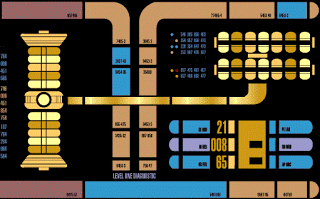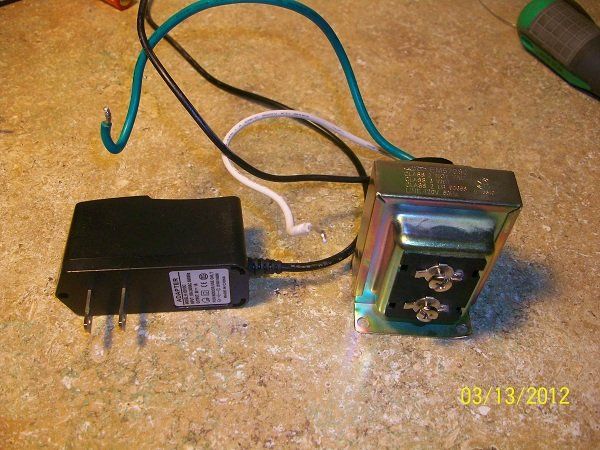Published Wednesday April 20, 2011: Updated 3/18/2012
Most appliances draw a tiny bit of power all the time in exchange for a convenient or useful purpose. For example, a cordless phone with base station, a TV with remote control or the microwave oven with its glowing clock and fancy Lieutenant Commander Data console touch buttons.

Now don’t get me wrong. Doorbell lights are helpful, convenient and luxurious. Not only do they pinpoint where the doorbell is located, but pushing the button turns the light off, indicating to the visitor that the doorbell rang inside. Oooo fancy!
"But why would I want to aid the Kirby salesman at being able to reach me better"? This is a discussion for a later blog topic, "How to electrify door-to door Solicitors with 24,000 Volts while still keeping little Jimmy and Mrs. Snow (from down the street) out of harm’s way".
When I find that an appliance in my house draws power all the time for no good reason, its gets shut off. For example, the sprinkler timer and A/C compressor during the winter time.
As I near the end of my list of phantom power consuming appliances, I’m starting to look at the efficiency of these devices. Why should a TV draw 20 watts in standby when it could provide the same function drawing less than 1 watt?
One night while turning off the porch light, I noticed that the doorbell light was providing quite a bit of light all by itself. It seemed like overkill that this doorbell indicator was acting more like a beacon of hope for tempest tossed sailors than a doorbell light.

A doorbell is a simple circuit. It has a low voltage transformer that steps 120 volts AC down to about 21 volts AC which then runs through low voltage wiring to the doorbell switch. The doorbell switch has a small incandescent bulb wired across it. The tiny light bulb provides light but has too high of resistance to actuate the solenoid. When the suspecting visitor pushes the button, the circuit is closed, shorting out the light and energizing the solenoid.
The solenoid has a small hammer that compresses a spring and smacks into a "ding" bar, (I just made that up). When the switch is released, the solenoid de-energies and the hammer flies back the other way into a "dong" bar, (ha ha, I’m such a dork).
During the "ding-dong" sequence the entire circuit draws over 2 amps from the 21 volts AC provided by the transformer. The total power consumption is about 50 watts but only lasts the length of "ding dong", so who cares.

Even with all my fanaticism, I don’t lose any sleep over a dinky 50 watt ding dong. If someone were to ring my doorbell for ½ a second, 20 times a day, every day for a year, aside from me trying to kill them, the total time spent ringing the doorbell would only add up to 0.5*20*365 = 3650 seconds or ~1 hour per year. At 50 watts, that would only cost ½ cent per year.

What concerns me is the power draw of the incandescent doorbell light itself. The continual power draw of my doorbell (with light) is about 4 watts. That might not seem like much but if you consider that it runs 24-7 all year long, that adds up to 35 kWh annually and costs $3.50/year.
"That’s still not a big deal" you say? Well, saving a little energy everywhere really adds up. After all, "Find a penny, pick it up, all the day you’ll be a scrounge. A scrounge who just made a penny that is".
The heady days of the incandescent indicator peaked around the time of the original Star Trek series. Today the indicator light of choice is the LED.

My original LED doorbell design started out as a simple white LED with a current limiting resistor. That works okay but since the LED is being powered off of alternating current, it flickers at 60 Hertz. I don’t know about you but that annoys the crap out of me. It might even send poor aunt Edna into an epileptic seizure each time she steps foot on my porch. I must rectify the situation.
I modified the circuit to include 4 diodes and a 3.3uF capacitor. 3.3uF was chosen for exactly 3 point 3 reasons:
- I already had one
- It's large enough that the LED won’t flicker and
- It's small enough that the LED will go out when the button is pushed.

To my dismay, my circuit caused the doorbell circuit to ring continually with an annoying solenoid buzz.
In Chinese Accent: "Confucius say: A ding with no dong is dung".
Adding a 1.8K resistor in series with the rectifier stopped the solenoid from triggering.

For comparison, I measured the current draw of both lights.
Incandescent Light 21.8VAC 75mA 1635mW
LED Light 21.8VAC 3mA 65mW
Less power draw on the inefficient low voltage transformer and less current leaking through the solenoid resulted in even more power saved. The 1.5 watt savings from swapping out the incandescent light nearly tripled into 4 watts when the power consumption was measured on TED.

You may say that 4 watts is a trivial power reduction. That may be true, but the sailors sure are furious.
Update: 3/18/2012
I swapped out the old transformer with a switching supply that I had lying around. After some experimenting, I learned that the solenoid that drives the "ding-dong" bars doesn't care weather you give it DC or AC. This is a good thing because switching supplies are DC and not only that, they are way more efficient than a buzzy old transformer.
I didn't exactly have a switching supply lying around that put out the right voltage. I did have a tiny little 9 volt, 1 Amp supply. I opened it up and quickly found a 27kΩ voltage reference resistor (surface mount) that controlled what the output voltage should be. After some trial (and lots of error), I arrived at a 68kΩ resistor value to give me approximately 20 volts DC out. I also added an additional capacitor to beef up the surge current rating of the supply, helping it to drive the solenoid.

It was a really easy mod to do to a $3.00 power supply from DealExtreme. I can make it whatever voltage I want from 3V - 25V, simply by changing out the reference resistor. While it is possible to go higher in voltage, the electrolytic caps (and maybe a transistor) would have to be swapped out with high voltage ones.

Comparison of the old transformer (right) and the new switching supply (left).
My doorbell is actually louder now than it was before. I think DC is causing the clapper to hit the bars harder than it was before.
I should also note that I removed the bridge rectifier and filter cap circuit that I put in the doorbell switch previously. The 20 VDC drives the resistor and LED directly without any adverse flickering. The LED still goes out like normal while the button is pushed.
All in all, I shaved off an additional 1.6 watts of standby power.
"But John, isn't going to all this effort for a lousy 1.6 watts a little fanatic?" Absolutely! But I am on a quest for the lowest phantom power possible.
